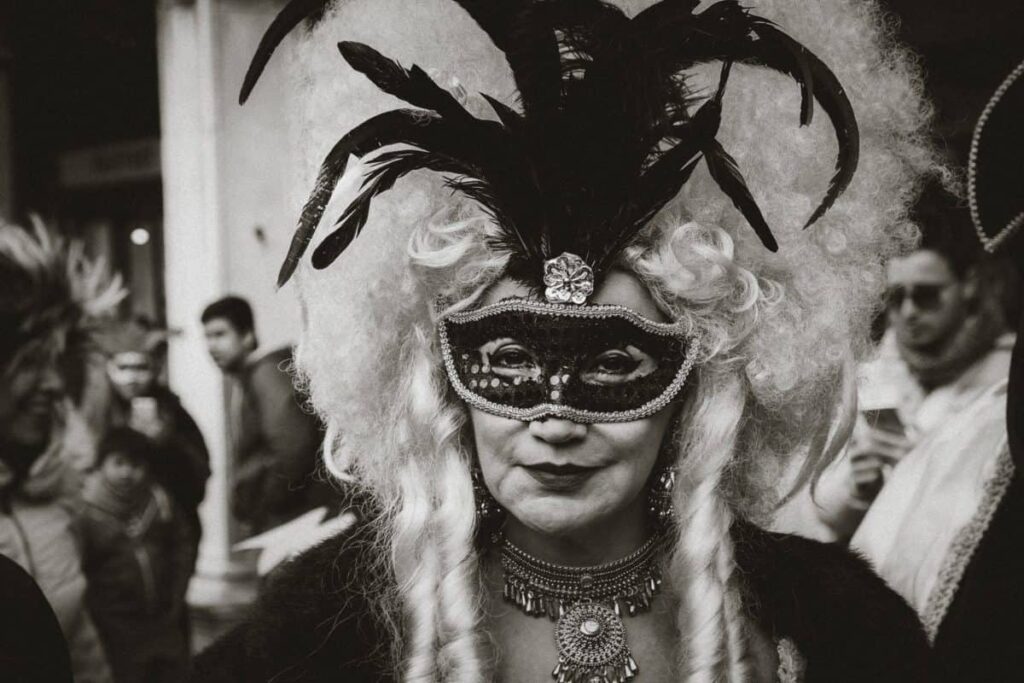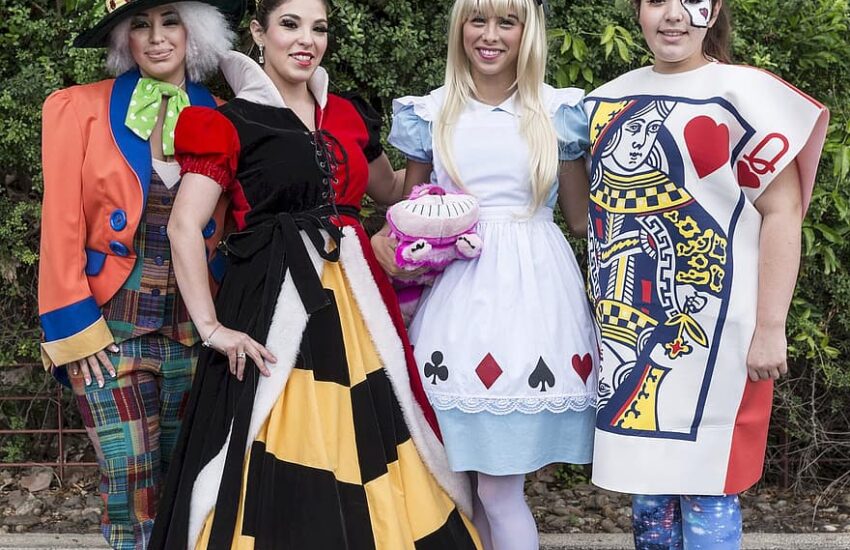Halloween is a time for creative expression and self-expression, and one of the most exciting parts of this holiday is the opportunity to dress up in costumes. The tradition of wearing costumes on Halloween dates back to ancient Celtic and medieval European celebrations. Over the years, Halloween costume trends have evolved and changed, reflecting cultural shifts, pop culture influences, and the creative ideas of individuals. In this article, we will explore the evolution of Halloween costume trends throughout the years, from the traditional costumes of the past to the innovative and diverse costumes of the present day.
Historical Costume Trends

The tradition of wearing costumes on Halloween dates back to ancient Celtic and medieval European celebrations. However, the costumes of the past were quite different from those we see today. In ancient Celtic and medieval European celebrations, people would wear costumes made of animal skins or plant materials as part of their religious rituals. These costumes were designed to ward off evil spirits and protect the wearer from harm.
During the Victorian era, Halloween costumes became more popular, but they were still largely inspired by folklore and mythology. Popular costumes included witches, ghosts, and fairies, and these costumes were often handmade using simple materials like paper and fabric.
In the 20th century, Halloween costumes began to reflect popular culture trends. In the 1920s and 1930s, costumes inspired by Hollywood movies and comic book characters became popular. This trend continued through the 1950s and 1960s, with costumes based on popular TV shows and movies like Batman and Star Trek.
In the 1970s and 1980s, Halloween costumes became more diverse, with people embracing a wider range of themes and characters. This period also saw the rise of licensed costumes, with companies like Disney and Warner Bros. creating costumes based on their popular characters.
The 1990s saw a surge in DIY costumes, with people opting to make their own costumes at home rather than purchasing pre-made costumes. This trend was fueled by the popularity of craft and home decor shows, which encouraged people to get creative and make their own costumes using materials like fabric, paint, and glitter.
In the early 2000s, Halloween costumes began to reflect the influence of technology and the internet. Popular costumes included characters from popular video games like Super Mario and Halo, as well as internet memes like the Dancing Baby and the Hamster Dance. Throughout the mid-2000s and into the 2010s, Halloween costumes continued to reflect the influence of popular media, particularly film and television. For example, superhero costumes surged in popularity with the release of blockbuster superhero films, including “The Dark Knight” (2008), “The Avengers” (2012), and “Black Panther” (2018). In addition to superheroes, costumes based on popular movies like “Harry Potter,” “The Hunger Games,” and “Frozen” also became popular during this time.
Pop culture also continued to influence costume choices, with popular television shows like “Breaking Bad” and “Game of Thrones” inspiring costume ideas. Reality television also contributed to costume trends, with costumes inspired by shows like “Dancing with the Stars” and “Jersey Shore” gaining popularity.
In recent years, the popularity of Halloween costumes has continued to evolve, with a renewed focus on nostalgia and retro themes. Popular costumes have included throwbacks to the 1990s and early 2000s, with characters from shows like “Friends,” “The Fresh Prince of Bel-Air,” and “Buffy the Vampire Slayer” making a comeback. There has also been a renewed interest in classic horror movie characters like Dracula, Frankenstein’s monster, and the Wolfman.
Finally, the COVID-19 pandemic had a significant impact on Halloween costume trends. In the early 2020s, costumes based on masks and personal protective equipment (PPE) were popular, reflecting the widespread use of masks during the pandemic. There was also a trend towards “virtual” costumes, which could be worn for online gatherings and video calls.
Pop Culture Influences
In recent decades, pop culture has had a significant influence on Halloween costume trends. From superheroes to TV show characters, popular culture has provided a wealth of inspiration for Halloween costumes.
One of the biggest pop culture influences on Halloween costumes in recent years has been the Marvel Cinematic Universe. With the release of blockbuster movies like Avengers: Endgame, Iron Man, and Black Panther, there has been a surge in popularity of superhero costumes. Many people choose to dress up as their favorite Marvel characters for Halloween, such as Spider-Man, Captain America, and Thor.
In addition to the traditional superhero costumes, Marvel Universe has also inspired a new range of female superhero costumes. Characters like Captain Marvel, Black Widow, and Scarlet Witch have become popular costume options for women, offering them an opportunity to dress up as strong and powerful characters.
Instagram and TikTok have also had a significant impact on Halloween costume trends in recent years. These social media platforms have become popular platforms for sharing costume ideas and tutorials, and they have inspired a range of creative and unique costume ideas.
For example, Instagram has given rise to the trend of DIY costumes and group costumes. Many users on the platform share tutorials for making costumes at home, using materials like fabric, paint, and glitter. This has encouraged people to get creative and make their own costumes, rather than purchasing pre-made costumes from a store.
TikTok, on the other hand, has given rise to a range of viral costume trends. Users on the platform create and share videos of themselves dressed in various costumes, inspiring others to follow suit. Some of the most popular costume trends on TikTok include the “E-Girl” and “E-Boy” looks, which involve dressing up in a combination of goth, punk, and anime-inspired clothing.
Another popular costume trend on TikTok is the “VSCO girl” look, which involves wearing a range of trendy and eco-friendly clothing items, such as oversized t-shirts, scrunchies, and reusable water bottles. This trend has been popularized by young people on TikTok, and it reflects a growing interest in sustainability and eco-consciousness among younger generations.
Other pop culture influences on Halloween costumes in recent years include TV shows like Game of Thrones, Stranger Things, and The Handmaid’s Tale, as well as movies like Frozen, Star Wars, and Harry Potter. These shows and movies have provided a wealth of inspiration for costume ideas, and they have inspired a range of pre-made costumes and DIY options.
Gender and Cultural Shifts
In recent years, there has been a growing emphasis on gender and cultural sensitivity, which has led to changes in the types of costumes that are deemed acceptable.
One significant shift has been a move towards gender-neutral costumes. In the past, Halloween costumes were often heavily gendered, with boys dressing up as superheroes and girls as princesses. However, in recent years, there has been a growing movement towards gender-neutral costumes that can be worn by anyone. This has led to the emergence of costumes like unicorns, dinosaurs, and animals, which are not gender-specific.

Another important shift has been a growing awareness of cultural appropriation and sensitivity. In the past, Halloween costumes often involved dressing up as cultural stereotypes, such as Native American headdresses or geishas. However, as society has become more aware of the impact of cultural appropriation, there has been a move towards more respectful and sensitive costume choices.
There have been several high-profile scandals involving politicians and celebrities wearing racially insensitive costumes, which have drawn attention to this issue. For example, in 2019, Canadian Prime Minister Justin Trudeau was criticized for wearing brownface and blackface in the past, while Virginia Governor Ralph Northam was also embroiled in a scandal over a racist photo in his medical school yearbook.
These scandals have brought the issue of cultural sensitivity to the forefront of public consciousness, leading to a greater emphasis on culturally appropriate and respectful costumes. Today, it is not uncommon to see warnings from universities and organizations about avoiding costumes that perpetuate negative stereotypes and cultural appropriation.
As a result of these shifts, there has been a growing emphasis on inclusive and culturally sensitive costume choices. Many costume companies now offer a range of culturally appropriate costumes, such as traditional clothing from different countries, as well as a range of gender-neutral options.
Furthermore, there has been a growing movement towards DIY costumes and upcycling old clothes and accessories to create new and unique costumes. This approach allows people to express their creativity and personal style without relying on pre-made costumes that may perpetuate negative stereotypes or be insensitive to cultural or gender issues.
Overall, the shift towards gender and cultural sensitivity has had a significant impact on Halloween costume trends. While there is still work to be done in terms of promoting inclusive and respectful costume choices, the growing awareness of these issues is a positive step forward for society as a whole.
Costume Manufacturing and Retail Trends
The commercialization of Halloween has had a significant impact on costume trends. Costume manufacturers and retailers have played a major role in shaping Halloween costume trends, with companies constantly introducing new and innovative designs to meet consumer demand.
In recent years, there has been a growing trend towards sustainable and eco-friendly costumes. Many costume manufacturers are now using recycled materials and eco-friendly dyes to create their products. In addition, there has been a growing demand for locally-made and ethically-produced costumes, with consumers becoming more conscious of the environmental and social impact of their purchases.
Halloween costume trends will continue to evolve and change. As new movies and TV shows are released, and as social media platforms continue to grow and change, we can expect to see new and innovative costume ideas emerging every year.
References:
Bakke, J. (2018). The spooky evolution of Halloween costumes. The Washington Post. https://www.washingtonpost.com/news/retropolis/wp/2018/10/29/the-spooky-evolution-of-halloween-costumes/
Cohen, M. (2018). A history of Halloween costumes. History. https://www.history.com/news/halloween-costumes-history
Crawford, A. (2018). How Halloween costumes became so popular. Time. https://time.com/5423473/halloween-costume-history/
Farrell, S. (2020). Halloween in the age of Instagram and TikTok. BBC. https://www.bbc.com/culture/article/20201022-halloween-in-the-age-of-instagram-and-tiktok
Giovannucci, M. (2018). The evolution of Halloween costumes: a brief history. Forbes. https://www.forbes.com/sites/michellegiovanni/2018/10/27/the-evolution-of-halloween-costumes-a-brief-history/?sh=181c1cf358ea
Koerner, B. I. (2018). The history of Halloween costumes. National Geographic. https://www.nationalgeographic.com/culture/holidays/reference/history-of-halloween-costumes/
Rupp, L. J. (2018). The evolution of Halloween costumes. Smithsonian Magazine. https://www.smithsonianmag.com/arts-culture/evolution-halloween-costume-180970832/
Zhang, L. (2021). The controversial history of Halloween costumes. JSTOR Daily. https://daily.jstor.org/the-controversial-history-of-halloween-costumes/

